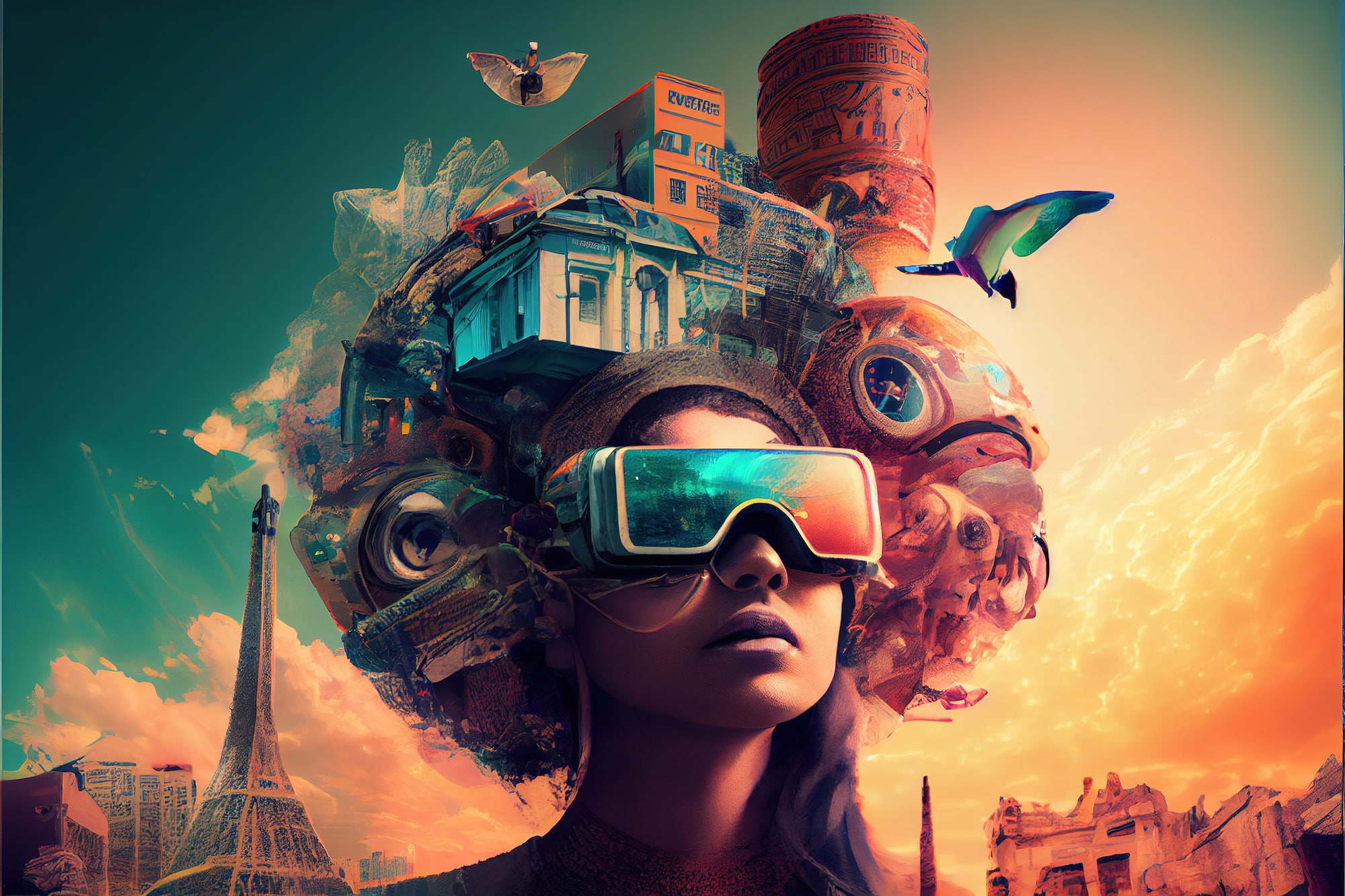Have you ever wanted to create videos but felt uncomfortable showing your face on camera? You’re not alone. As someone who’s spent years in content creation, I’ve seen a fascinating shift in how creators approach video production – and AI is leading the charge.
The world of faceless videos has exploded recently, giving creators new ways to connect with audiences without needing to be on camera. This approach isn’t just about overcoming camera shyness – it’s becoming a strategic choice for many content creators looking to scale their production while maintaining privacy.
In this article, I’ll walk you through everything you need to know about AI-generated faceless videos, from the technology behind them to practical steps for creating your own. Let’s dive in!
What Are Faceless Videos and Why Are They Growing in Popularity?
Faceless videos are exactly what they sound like – content that doesn’t show the creator’s face. Instead, these videos rely on voiceovers, animations, stock footage, text overlays, and other visual elements to deliver information and engage viewers.
According to recent data, 68% of new YouTube channels are now adopting faceless formats. Why? Many creators prefer not to appear on camera, and AI tools have made production much more accessible. Plus, on platforms like TikTok and Instagram Reels, faceless videos generate up to three times higher engagement than traditional face-forward content.
Common types of faceless videos include:
- Tutorial and how-to guides
- Explainer videos
- Motivational content
- Product reviews
- Educational content
- Stock footage compilations
The beauty of faceless videos is that they focus on delivering value rather than personal branding. This approach works particularly well for creators who want to maintain their privacy or who aim to create content that can be scaled across multiple channels.
The Technology Behind AI-Generated Faceless Videos
The rapid growth of faceless videos wouldn’t be possible without recent advances in AI technology. Let’s look at the core technologies that power these videos:
AI Script Generation
Creating compelling scripts has traditionally been time-consuming, but AI tools have changed that. Advanced language models can now analyze a simple prompt and generate structured scripts in minutes.
For example, with tools like ChatGPT or specialized video AI platforms, you can input a topic like “5 ways to save money on groceries,” and the AI will produce a complete script with an introduction, main points, and conclusion. This automation reduces scripting time from hours to minutes.
Voice Synthesis
Modern AI voice generators have become remarkably realistic. Services like Eleven Labs and Murf.ai offer voices in dozens of languages with different tones and accents. The technology has advanced so much that in many cases, viewers can’t distinguish between AI voices and human narrators.
These tools allow creators to select voice profiles that match their brand – whether that’s an “enthusiastic female with an Australian accent” or a “calm male voice with slight British inflection.” Some platforms even offer voice cloning features that can recreate a voice from a short sample.
Visual Asset Generation and Curation
AI doesn’t just write and speak – it can also help with visuals. Tools scan massive libraries of stock footage to match scenes with script keywords, while generative AI can create custom images and animations from text descriptions.
For instance, if your script mentions “a person saving money,” the AI might select footage of someone putting coins in a jar or using a budgeting app. This automatic matching saves hours of searching through stock footage libraries.
Automated Editing
The final piece of the puzzle is editing, which AI has also transformed. Automated workflows can stitch together assets, apply transitions, add background music, and even generate captions. Some advanced systems can produce and upload videos to platforms like YouTube with minimal human intervention.
| AI Component | Function | Popular Tools |
|---|---|---|
| Script Generation | Creates structured video scripts from topic prompts | ChatGPT, Jasper, Copy.ai |
| Voice Synthesis | Converts text to natural-sounding speech | Eleven Labs, Murf.ai, Play.ht |
| Visual Creation | Matches or generates visuals for script segments | Runway, DALL-E, Leonardo AI |
| Automated Editing | Assembles components into finished videos | CapCut, DaVinci Resolve AI, Invideo AI |
Step-by-Step Guide to Creating Your First AI-Generated Faceless Video
Now that we understand the technology, let’s break down the process of creating a faceless video using AI tools:
1. Choose Your Topic and Research
Start by selecting a topic that interests you and your potential audience. Great faceless videos often fall into categories like tutorials, explanations, reviews, or compilations. Research the topic thoroughly to ensure you’re providing accurate and valuable information.
Pro tip: Look for topics with high search volume but moderate competition for the best results.
2. Generate Your Script
Use an AI writing tool to create your script. When prompting the AI, be specific about:
- The structure you want (introduction, main points, conclusion)
- The tone of voice (casual, educational, motivational)
- Key points to cover
- The approximate length
After generating the initial script, review and edit it to add your personal touch and expertise. This human oversight is crucial for quality control.
3. Create Your Voiceover
Next, convert your script to audio using an AI voice generator. When selecting a voice:
- Choose a voice that matches your content’s tone
- Test different voices to find the most natural-sounding option
- Adjust pronunciation for any words the AI might struggle with
- Consider adding breaks and pauses for natural pacing
4. Source or Generate Visual Assets
With your audio ready, it’s time to gather visuals. You have several options:
- Use AI tools to match stock footage to your script
- Generate custom images using AI image generators
- Create simple animations or text overlays
- Use screen recordings for tutorial-style content
For stock footage, platforms like Pexels, Pixabay, and Unsplash offer free options, while services like Shutterstock and Adobe Stock provide premium collections.
5. Edit Your Video
Now it’s time to bring everything together. Using video editing software or an AI-powered editor:
- Sync your visuals with the voiceover
- Add transitions between scenes
- Include text overlays for key points
- Add background music (ensuring it’s copyright-free)
- Include captions for accessibility
Even with AI assistance, this step often requires some manual work to ensure everything flows naturally.
6. Optimize for Your Platform
Different platforms have different requirements. Adjust your video accordingly:
- YouTube: 16:9 aspect ratio, higher-quality longer content
- Instagram Reels/TikTok: 9:16 vertical format, shorter duration
- Facebook: Square 1:1 format often works best
Also consider platform-specific elements like thumbnails for YouTube or hook sections for TikTok.
7. Publish and Promote
Finally, upload your video with appropriate titles, descriptions, and tags. Some AI systems can even suggest optimal titles and descriptions based on SEO analysis.
Real Success Stories: The Economics of Faceless Videos
The financial potential of faceless videos is remarkable. Let me share a real case study:
Jake started a faceless YouTube channel focusing on personal finance tips. Using Invideo AI for script generation and Eleven Labs for voiceovers, he created three videos per week. After six months, his channel hit 50,000 subscribers and generated approximately $8,000 monthly through a combination of ad revenue and affiliate marketing.
What made Jake’s approach work? He focused on a specific niche, maintained consistent posting, and created genuine value for his audience. Even though viewers never saw his face, they connected with his content because it provided useful information in an engaging format.
Other success stories include:
- Gaming channels that use gameplay footage with AI voiceovers
- Financial advice channels earning six figures through affiliate marketing
- Educational channels with millions of views using animated explainers
According to recent data, top faceless channels earn millions annually, with some creators reporting monthly incomes exceeding $100,000 through combined revenue streams like ads, affiliates, and sponsorships.
Best AI Tools for Creating Faceless Videos
The market for AI video creation tools has exploded. Here are some of the most effective options:
All-in-One Video Creation Platforms
- Invideo AI: Offers end-to-end video creation, from script generation to visual assets and editing
- Synthesia: Creates AI avatars and presentations without needing cameras
- Pictory: Transforms written content into videos automatically
Specialized Tools
- Eleven Labs: Premium AI voice generation with natural-sounding results
- Runway: Advanced AI video generation and editing capabilities
- CapCut: User-friendly editing with AI-powered features
When choosing tools, consider your budget, technical skill level, and specific needs. Many platforms offer free trials, so you can test before committing to a paid plan.
| Tool Type | Best For | Cost Range |
|---|---|---|
| All-in-One Platforms | Beginners and those wanting streamlined workflows | $20-100/month |
| Script Generation | Content strategy and planning | $0-30/month |
| Voice Generation | Natural narration without recording | $5-50/month |
| Video Editing with AI | Creators who want more control over final output | $0-75/month |
Ethical Considerations and Best Practices
While AI-generated faceless videos offer many benefits, they also raise important ethical questions that responsible creators should consider:
Transparency with Your Audience
Being honest about using AI tools builds trust. You don’t need to detail every AI tool you use, but misleading viewers about the nature of your content can damage credibility. Many successful creators openly discuss their production methods, turning their process into additional content.
Avoiding Misinformation
AI can generate convincing but incorrect information. Always fact-check AI-generated scripts before publishing, especially for educational or informational content. Your responsibility as a creator doesn’t diminish when using AI tools.
Maintaining Originality
The accessibility of AI tools means many creators might produce similar content. Stand out by:
- Adding your unique insights and expertise
- Developing a recognizable style or format
- Creating content that reflects your authentic voice, even without showing your face
Copyright Considerations
Be careful with visual assets and music. Just because AI can access certain content doesn’t mean you have the right to use it. Stick to properly licensed stock footage, generated images, or your own materials.
The Future of Faceless Video Content
As AI technology continues to advance, we can expect several trends in faceless video creation:
More Personalization
Future AI tools will likely offer more customization options, allowing creators to develop unique styles even within AI-generated content.
Improved Realism
Voice synthesis and visual generation will become increasingly lifelike, further blurring the line between human and AI-created content.
Hybrid Approaches
Many creators will likely adopt hybrid methods, using AI for some aspects of production while maintaining human involvement in creative decisions.
Platform-Specific Optimization
AI tools will continue to adapt to the specific requirements of different platforms, making it easier to create optimized content for YouTube, TikTok, Instagram, and others.
Conclusion: Is AI-Generated Faceless Content Right for You?
AI-generated faceless videos represent a major shift in content creation. They remove many traditional barriers to entry, allowing anyone with ideas to create engaging videos without expensive equipment or on-camera presence.
Whether you’re camera-shy, value your privacy, or simply want to scale your content production, AI tools can help you create professional-quality videos efficiently. However, the most successful creators use AI as a tool rather than a replacement for creativity and authentic value.
If you’re considering creating faceless videos, start small. Experiment with the tools mentioned in this article, find your niche, and focus on delivering genuine value to your audience. The technology will continue to improve, but the fundamentals of good content remain the same: provide information, entertainment, or inspiration that resonates with viewers.
Ready to create your first AI-generated faceless video? The tools are accessible, the potential audience is vast, and the opportunity is waiting. Your face doesn’t need to be on camera for your voice to be heard.
























